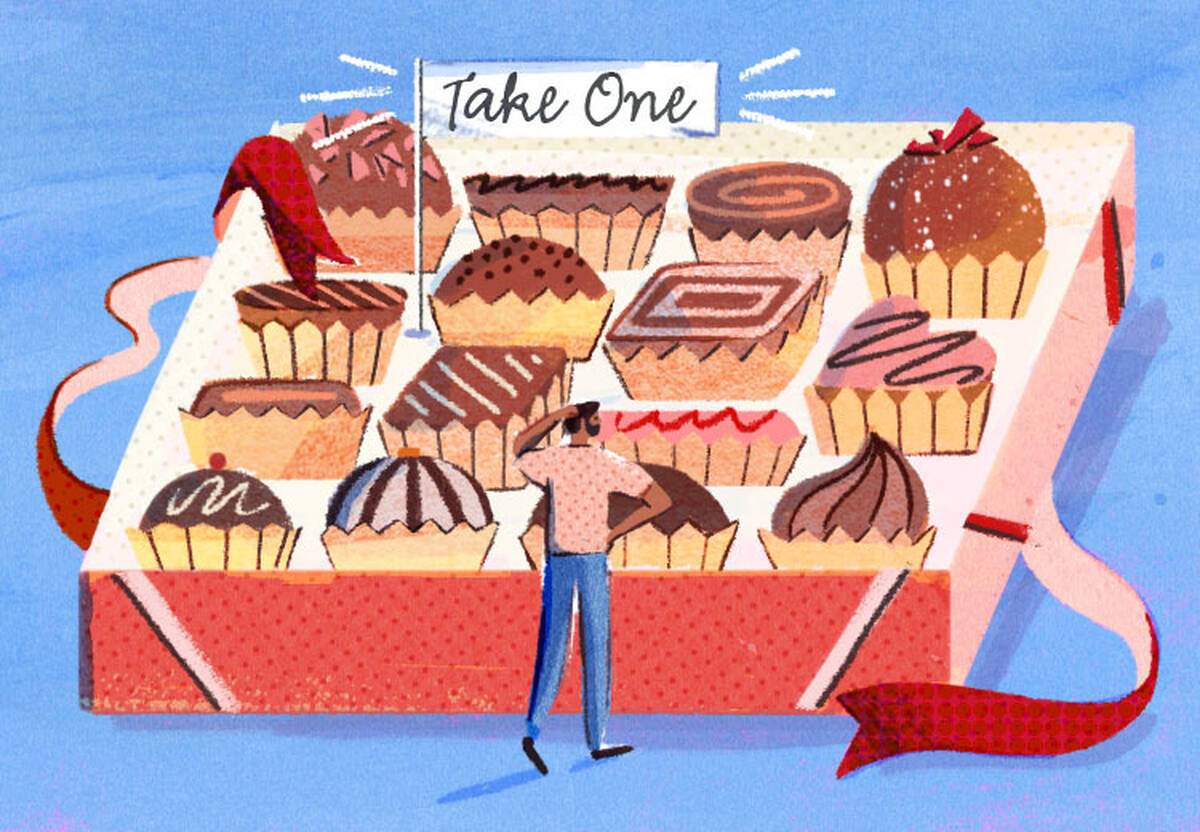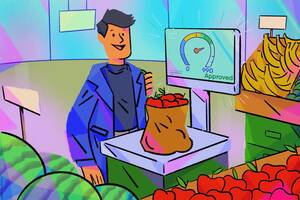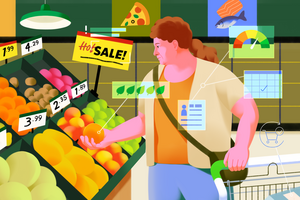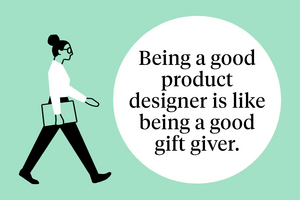Consumers these days aren’t suffering for lack of options.
Say, for instance, you’re in the market for a “World’s Best Grandma” mug. Amazon has thousands of options to choose from. (The sheer number of which, we should add, raises questions about the integrity of this title.)
But lots of options means lots of decisions. And with each decision come opportunities to be swayed by a range of psychological factors, from the ambient lighting at that big-box store, to the sense of urgency in an online flash sale.
So we’ve rounded up some recent research from Kellogg faculty on the psychology of consumer decision-making to help you make savvy choices this season.
1. Choice Overload Is Real
With so many choices, there’s likely a mug out there that’s perfect for your grandma—no matter who she is or how obscure is her taste in music.
But when does having so many options actually become overwhelming?
Maybe you’ve heard of “choice overload,” the phenomenon where having too many choices can make it harder and less pleasant for us to make a selection. It can also make us feel less satisfied with the choice we do make—or even so frustrated that we don’t make a choice at all.
But choice overload does not happen uniformly in all circumstances. So in a meta-analysis, which drew on data from several earlier studies, marketing professors Ulf Bockenholt and Alex Chernev, as well as a colleague, identified four factors that increase your chances of experiencing choice overload. (A second paper with associate professor of marketing Blake McShane explored similar themes from a methodological perspective.)
— Choice-set complexity: How complex are your choices? This includes the absolute number of options, but also the amount of information you have about each and how that information is organized. (Is shipping free? Can I get it cheaper, or faster, from another vendor or website? Is it worth it to pay an extra $2 to get Grandpa a mug too?)
— Decision-task difficulty: How difficult is the actual act of deciding? If you’re toggling between thirty tabs on your mobile phone, or frantically scouring the toy aisle ten minutes before closing, you’re likely to feel more overwhelmed than if you can make the decision at a place or time of your choosing.
— Preference uncertainty: How much do you understand your own preferences? Do you already know your priorities, or are you still trying to sort them out?
— Decision goal: Are you trying to make a choice that can’t be changed later? Or are you just gathering information to use at a later date?
All of which means you may be able to ease the strain of choice overload by thinking ahead of time about what qualities in an item are most important to you—size, durability, customizability, shipping time—and giving yourself plenty of time and space to deliberate before you finally make a purchase.
2. Let Anger Keep You Focused
One surprising way to keep your eye on the prize? Anger.
We tend to think of anger as an unproductive emotion that can lead us to behave in ways we might later regret. But, for better or for worse, anger makes us more certain about our own goals—and in circumstances where we might otherwise get distracted by a vast array of choices, this certainty can be a boon.
In several studies, Michal Maimaran, a research associate professor of marketing, and colleagues found that participants who had been primed to feel angry were more likely than other participants to choose products that aligned with their goals—a laptop that is speedy, for instance, versus one with more storage capacity. Anger made another set of participants less likely to defer a decision between two airline tickets. And in a third study, angry participants were ultimately more satisfied with their selection a week later.
“So not only are customers making fewer trade-offs, taking less time to choose, and making more goal-consistent choices, they are eventually more satisfied with what they choose,” says Maimaran.
3. We’re Swayed by Popularity
Sometimes we know a good deal when we see one. And sometimes, when we’re not so sure, we turn to the wisdom of the crowds.
Operations professor Achal Bassamboo and coauthors recently studied the most important factors that lead us to click “buy” during Amazon Lightning Deals—limited-time, limited-quantity promotions sporadically offered by the retailing behemoth.
In their analysis, the researchers considered how we are affected by the product being offered—its ratings and reviews—but also how we are affected by the popularity of the deal itself. Specifically, how much were shoppers swayed by a little bar that displayed the percentage of items that had already been claimed?
By having research assistants put large quantities of inventory in their own shopping carts, the researchers were able to manipulate what actual shoppers believed to be the percentage of inventory still available. They found that, for each 10 percent increase in the number of items claimed, the rate at which the items were purchased increased by 2 percent.
“When people see that a deal is popular, it gives them additional information they did not have otherwise,” says Bassamboo. “That has a powerful effect when a customer is thinking about what action to take.”
This popularity effect is especially powerful, he explains, when other concrete information about the quality of the deal is less available.
4. To Stay Dispassionate, Don’t Look Down
Ah, there’s nothing quite like bright fluorescent lighting and the smells of cheap perfume to boost your holiday spirit—and potentially your spending: it turns out that shopping environments can have all kinds of interesting effects on us.
One surprising study, from research assistant professor of marketing Ata Jami, finds that viewing images from a high vantage point—such as looking down from atop a mountain, or having a bird’s-eye view of a meadow—makes us feel more in control and thus more open to purchasing new, unusual, or otherwise “risky” products.
So stay off those mall escalators, people.
5. Don’t Buy the Extended Warranty
Here’s a final tip: when buying a new TV, laptop, or cell phone, don’t buy the extended warranty. Just don’t. They’re generally a terrible deal for everyone—except the retailer.
And yet, customers buy them between 20 and 40 percent of the time.
So why are we such fools about warranties? As shown in new research from Yuval Salant and a colleague, we tend to wildly overestimate how often new electronics actually fail. When we are provided with reliable information about the chance of that new flatscreen TV needing repairs, our appetite for expensive warranties declines.
Featured Faculty
Charles E. Morrison Professor of Decision Sciences; Professor of Operations; Co-Director of MMM Program
John D. Gray Professor of Marketing
Research Assistant Professor of Marketing
Clinical Professor of Marketing; Research Professor of Marketing
Professor of Managerial Economics & Decision Sciences




